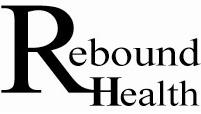You are here: |
Antibiotics for fixing cancer |
 |
|
Topic - Cancer What is cancer?Cancer cells are thought to be a normal cell gone wild, I disagree. I believe that a normal cell becomes infested with a germ, the germ stimulates the cell into hypergrowth, the germ is also hyper-grown, a free ride. Cells are constantly challenged by germs from air, food and water. A germ wants to enter our cell and cause hyper-growth, a lazy germ that piggy-backs the cell while it hyper-grows. How can a toxin cause cancer?A toxin weakens a cell anc causes death, not hyper-growth. A toxin would just kill the cell. I feel that germs are the final culprit in cancer due to the hyper-growth. Toxins just end life. Where do the germs come from?Life: Breathing. Eating. Drinking. Cuts, Injuries, Surgery, Trauma. Every part of our body has some germs, some friendly, some harmful. When bad germs overwhelm us, we get sick. To recover we need to be strong. We are strong when we are young. We are less strong as we age. Without knowing, our diet contains foods that weaken our ability to fight. Diet is key to be strong. Basics of how to reduce the germs in the body.Broad specturm antibiotics must not harm the cells further. The therapy used for treating h.pylori is a good example of multiple agents in combination. Often called a double, triple or quad therapy. Why a combination of anti-germ medications?These germs often live outside of our cells where things like penicillin circulates but does not enter inside the cell. Some agents can enter the cell such as tetracycline and macrolides (e.g. azithromycin). Some bacteria 'hold their breath' and stop growing. Treating the non-breathers is done in tooth root infections and pelvic inflammatory disease with metronidazole which also attacks single celled animals or fungi-like germs (amoeba). This forces the germs to 'wake up' and breath oxygen where penicillin and the immune system can harm them. Once a germ forms a village or colony they cause a lump. To protect their colony they form an outer shield which stops the immune system and things like penicillin. All germs from a biofilm in around 72 hours and this is why antibiotics are tested in the lab within 48 hours, before the biofilm forms. Once a biofilm is developed most germs become 'resistant' to the anti-biotic. Breaking the biofilm can take a separate agent such as lemon juice (citric acid), vinegar, aspirin and things like soap, salt or baking soda. Azithromycin is noted to break up biofilms when in higher concentrations but remember that the macrolides enter our cells, particularly the white blood cells that are attacking the infected hyper-growing cancer cell. Our cells also use glutathione to do this which is low when we are sick. Agents that work outside the cell:
Agents that work inside the cell:
Agents used by the cell to fight germsNitrogen is the bases of energy as seen in gun powder and the biological nitric oxide in our body. Immunologically used to kill germs. These free nitrogen based molecules that do not form proteins and so cannot be stored in the body. They must be ingested multiple times per day for strong immune function.
Digestive enzymes to break apart germs
Early stages of cancer are contained to one area. Only after a cancer gains the ability to digest membranes can it spread or metastasize. Protease-inhibitors are used in HIV with little real success of cure, just a slowing of the germ. The pancreas is able to make enzymes that can cleave proteins apart to 'digest' germs. A combination of intra-cellurlar (inside cells), extra-cellular (outside cells) and host immune cell action against cancer appears to work best in my experience Not intended to treat or diagnose anything. For discussion. Some terms esplaned:
( 0 Votes On This Page ) |

